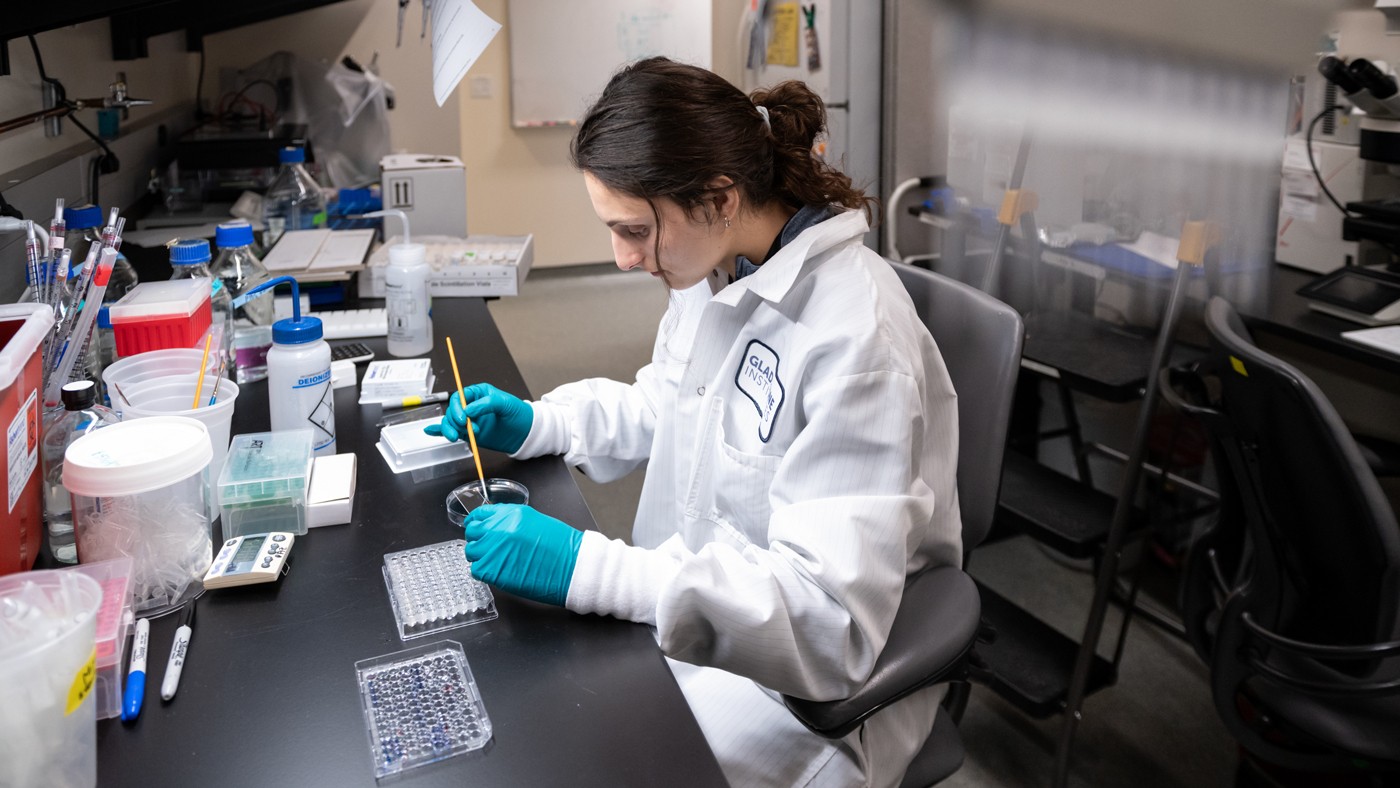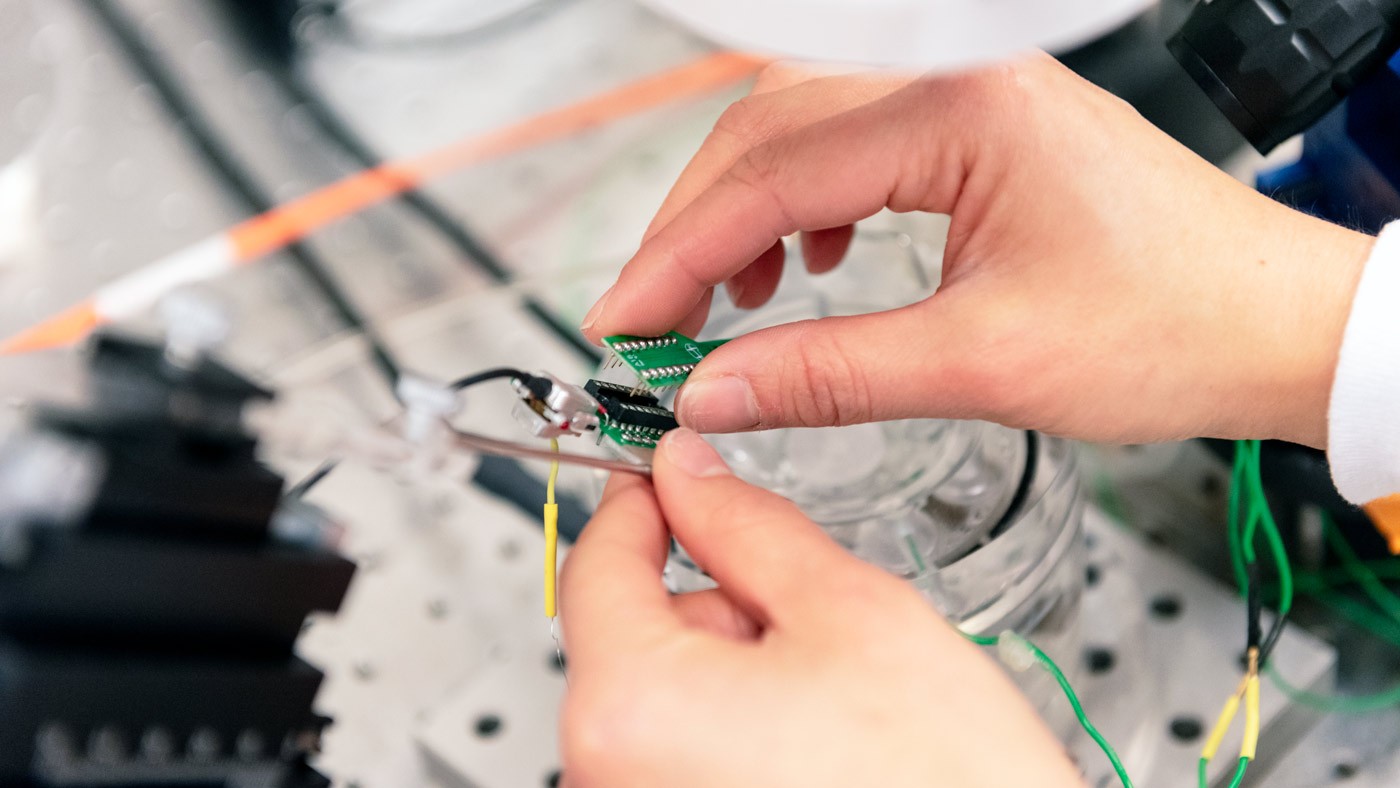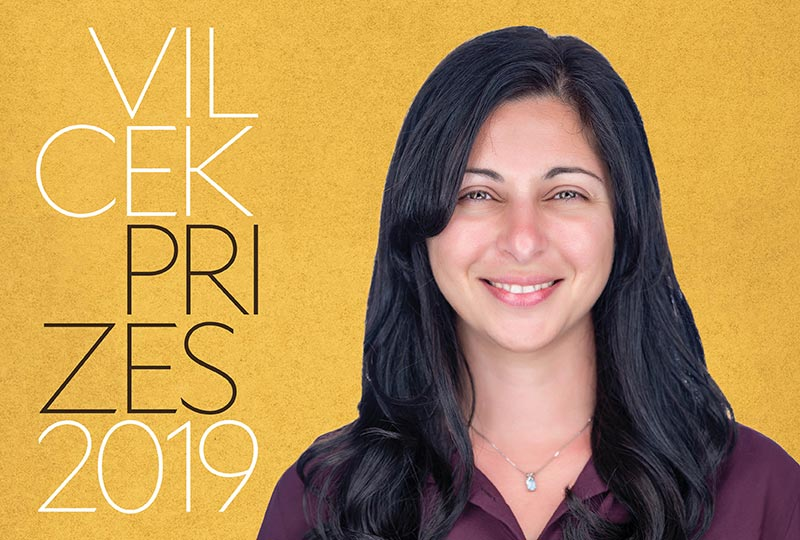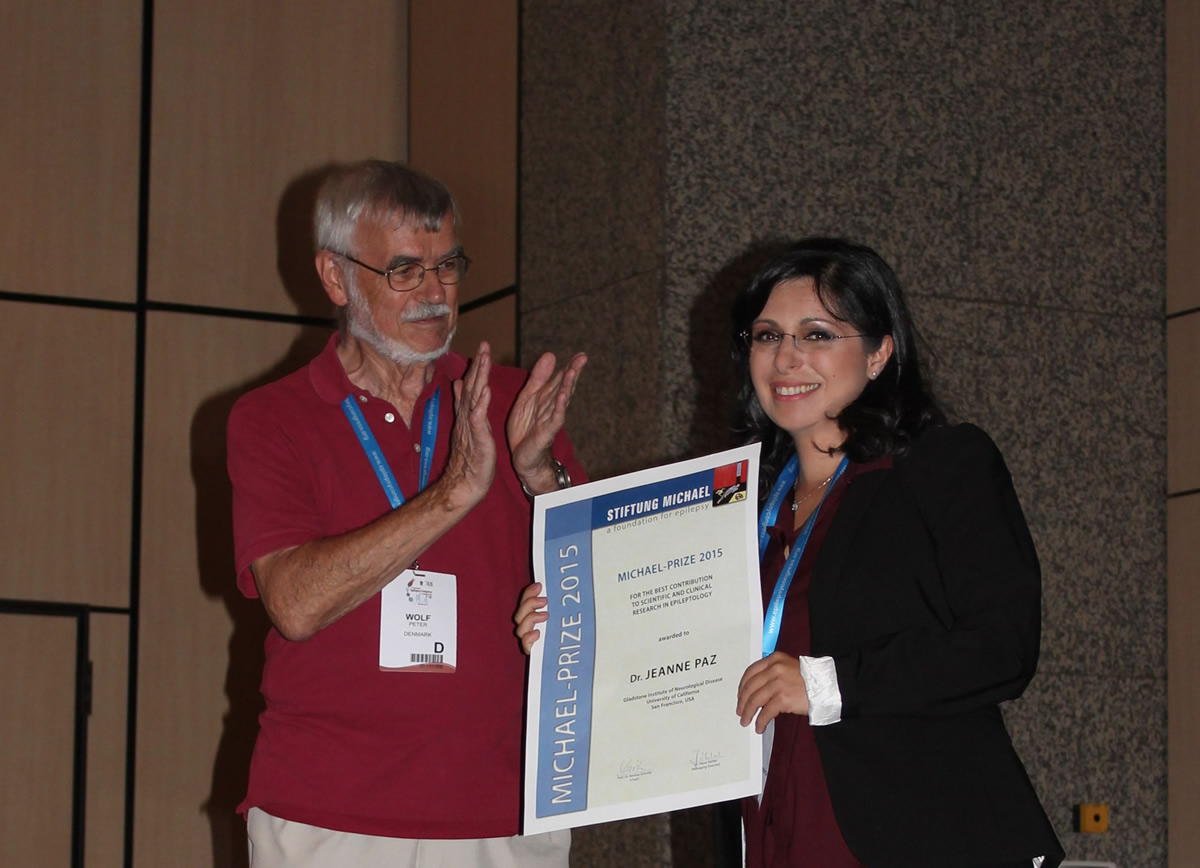Paz Lab
Neurological Disease
IN THE NEWS
Stem Cell Therapy Jumpstarts Brain Recovery After Stroke (also featured in Cure Epilepsy)
Na Ji and Jeanne Paz win 2024 Rennie Fund for the Study of Epilepsy
Na Ji and Jeanne Paz win 2024 Rennie Fund for the Study of Epilepsy
Gladstone Grad Student Shines on International Neuroscience Stage
Solving the Aftermath of Brain and Spinal Cord Injuries
Deanna Necula is studying the role of the protein C1q in the brain’s immune cells to see how it might contribute to long-term effects of traumatic brain injury, such as epilepsy and sleep problems.
Audrey Magsig studies different combinations of sex chromosomes and hormones to determine what might affect a person’s risk for epilepsy and other complications of traumatic brain injury.
Meet Gladstone: Britta Lindquist
Pathway Deep in the Brain Makes It Resilient after Injury
A new study led by Gladstone researchers suggests that targeting a protein in the thalamus could prevent the long-term damage that follows traumatic brain injury. In this photo, Graduate Student Frances Cho works with an electrode array to study brain samples.
Gladstone Scientists Stand with Ukraine
Postdoctoral researcher Yuliya Voskobiynyk spurs action to support Ukraine at Gladstone and beyond
SF researchers find possible breakthrough in treating traumatic brain injuries
This Molecule Could Be the Key to Understanding Why Concussions Have Such Long-Term Effects
Preventing the Long-Term Effects of Traumatic Brain Injury
A team of researchers—led by Jeanne Paz (left) and including Stephanie Holden (right)—uncover a potential new treatment that could prevent the chronic complications of traumatic brain injury.
Controlling nerve cells with light opened new ways to study the brain
Leading the Way to Better Treatments for People with Epilepsy
A Disease Is Only Rare until It Messes with the Wrong Mother
Epilepsy: From Mechanism to Treatment
The 2019 Vilcek Prize for Creative Promise in Biomedical Science is awarded to Jeanne T. Paz!
Click to watch her video
Two Possible New Ways to Treat Silent Seizures in Children
Stefanie and Alexandra's paper on the role of the Thalamus in Dravet Syndrome was recently published in Cell Reports and highlighted in the news
Jeanne Paz Receives the 2019 Vilcek Prize for Creative Promise
UCSF study points to immune system's role in neural development
Study could help explain link between seizures and psychiatric disorders
Jeanne Paz, PhD, and Alexandra Clemente discovered that different types of neurons in one brain region could explain how multiple neurological disorders occur at the same time. [Photo: Chris Goodfellow, Gladstone Institutes].
Jeanne Paz: Profile of a Scientist
Jeanne Paz receives the Michael Prize 2015
The Michael Prize is a biennial international award that recognizes the best epilepsy research in the world. The prize acknowledges Jeanne’s pioneering analysis of circuit mechanisms causing epilepsy after brain injury and her remarkable discovery that closed-loop optogenetics can be used to prevent seizure activity from spreading across brain regions. The formal award ceremony will take place in September at the International Epilepsy Congress in Istanbul.
Nature Reviews Neurology
Decade in review-epilepsy: Edging toward breakthroughs in epilepsy diagnostics and care
Gladstone Scientist Awarded International Prize in Epilepsy Research
Jeanne Paz Interview from The Gladstone Institutes on Vimeo.
Unrestrained excitement, Nature
Epilepsy arises from natural mechanisms in the brain that go awry. Researchers are trying to unravel its complexities.
A Postdoc's Path
By going against the tide, Jeanne Paz makes some waves of her own
Stanford Alumni Magazine
Epilepsy in 2013: Progress across the spectrum of epilepsy research
Over the past year, we have witnessed major advances in several areas of epilepsy research. The findings have important implications both for clinical practice and for future research.
Nature Reviews Neurology | Year in Review
Jeanne Paz, Invited Speaker [VIDEO]
Plenary Translational Symposium at the annual American Epilepsy Society meeting in Washington DC.
Jeanne Paz Interview [VIDEO]
Annual American Epilepsy Society meeting in Washington DC.
Epilepsy: Shining a light on seizure control—optogenetic approach shows promise for treatment and prevention of epilepsies
Effective treatments for patients with epilepsy are lacking. Current antiepileptic therapies are often unsuccessful, with many patients failing to respond to drugs, and surgical treatment being feasible in only a minority of individuals. Nature Reviews Neurology | Research Highlight
Algal Proteins Illuminate Epilepsy
The age of optogenetics is upon us. This experimental approach characterizes mechanisms of seizure initiation and propagation with a heretofore unprecedented level of specificity
Epilepsy Currents
How deactivating an inhibitor causes absence epilepsy: validation of a noble lie
In “The Republic,” Plato described a “noble lie” as a myth told by the elite to maintain social harmony
Epilepsy Currents
Optogenetic Treatment of Epilepsy
Here we discuss an alternative experimental approach that potentially offers the ability to suppress seizures “on demand”, while leaving neuronal and synaptic functions intact the rest of the time
Advances in Clinical Neuroscience & Rehabilitation
2012
Researchers use light to turn off epileptic seizures
Despite the prevalence of epilepsy among stroke sufferers, researchers have had little idea why the two are connected
LA Times Science Now
Flipping on the Lights to Halt Seizures
To see if the thalamus could be a target for treating seizures, Jeanne Paz and her colleagues turned to optogenetics, a technology that lets researchers use light to turn brain cells on and off
MIT Technology review
Priority paper evaluation: Channelrhodopsins shed light on a new pathway in absence epilepsy
Exploiting optogenetic methodology Paz and colleagues systematically isolate monosynaptic connections in thalamocortical nuclei to reveal the key pathological mechanism underlying absence seizures in the Gria4-/- mouse
Future Medicine/Future Neurology
Strokes: New Hope for seizure therapy
Discovery shows that damage in both the cerebral cortex and the thalamus play a role in the development of seizures after a stroke
San Francisco Chronicle
Optogenetic control of seizures
Closed-loop optogenetic control of thalamus as a tool for interrupting seizures after cortical injury
American Epilepsy Society
Scientists Cast Light Onto Roots of Illness Deep in the Brain
Scientists are learning how to turn neurons on and off at will by shining light into caverns of the mind
Wall Street Journal
2011
New form of seizure generation discovered
Study findings may lead to a better understanding of how ordinary, waking, sensory experiences can ignite seizures
Science Daily
2009
Perspectives: Plasticity of neuronal excitability in vivo [PDF]
Research findings by Paz and colleagues extends knowledge of the potential of functional plasticity observed in the whole brain in vivo
Journal of Physiology



